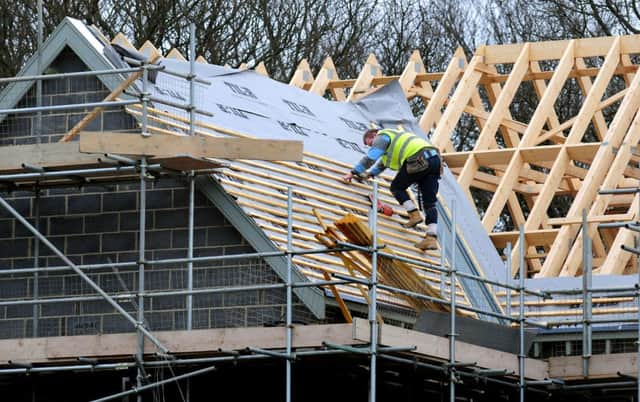Election jitters put developments on hold


The latest Glenigan index – released today – shows that construction activity across the UK hit a two-year low in the three months to April.
Non-residential activity slumped 21 per cent as office, retail and industrial sectors all fell back. There was a modest 1 per cent rise in residential activity as housebuilders continued to push the button on new projects, but the education sector was down 32 per cent as universities delayed schemes until after this Thursday’s vote.
Advertisement
Hide AdAdvertisement
Hide AdThe report covers the value of projects starting on site during the three-month period. Seen as a key indicator of construction activity, Glenigan’s index covers civil engineering, office and commercial projects over £250,000 and residential schemes comprising more than ten. It excludes any project more than £100 million in value.
Allan Wilén, economics director at Glenigan, said: “The pace of expansion in the commercial sectors has eased over the last six months, driven by a combination of a firming comparison base and an easing in investment across the economy during the second half of 2014.
“However the recent sharp decline is a break in this trend, and suggests a wholesale decision to ‘wait-and-see’ by private sector clients and developers.”
He added: “We expect construction starts to spring back during the second half of the year, so long as a credible government is formed and the prospect of a second general election later in the year fades. This would mitigate the impact of the recent slowdown.
“Continued improvements in planning approvals add weight to the view that this is a pause rather than a permanent shift in market conditions.”
The report comes on the eve of the latest Cips/Markit purchasing managers’ index (PMI) for construction. It is expected to indicate the sector – hit hard during the recession – remained in growth territory during April, albeit at a slightly reduced rate. Recent official data showed construction output contracted by 1.6 per cent quarter-on-quarter in the opening three months of 2015 after an even sharper drop in the fourth quarter of last year.
Howard Archer, chief European and UK economist at forecasting consultancy IHS Global Insight, said he expected tomorrow’s PMI to show a dip to 57.3 in April after falling to 57.8 in March from 60.1 in February.
But he added: “Despite the reported further contraction in construction output in the first quarter of 2015, there are grounds for optimism on the construction sector over the coming months.
Advertisement
Hide AdAdvertisement
Hide Ad“Barring prolonged political uncertainty following the general election, economic growth is expected to be healthy over the rest of 2015, which should be supportive to commercial construction activity and civil engineering. Furthermore, infrastructure projects appear to be holding up.
“Meanwhile, with housing market activity now showing some signs of coming off its recent lows, prospects may well improve for house building, even if the growth rate is unlikely to regain the heady levels seen earlier in 2014.”
Industry bosses in Scotland recently warned of a “chronic” shortage of skilled construction workers.